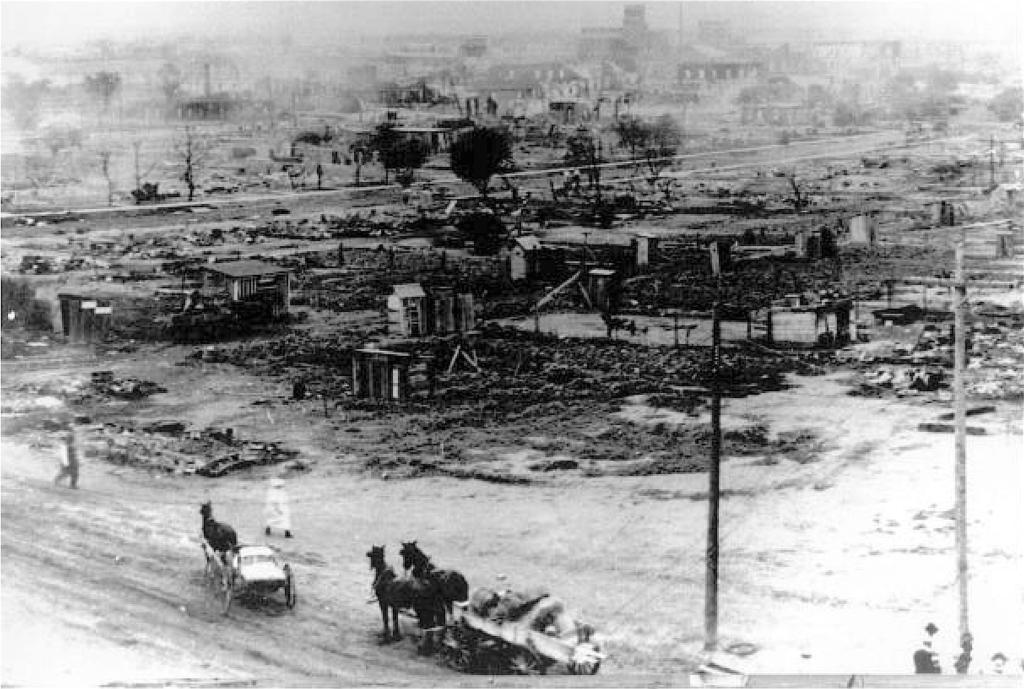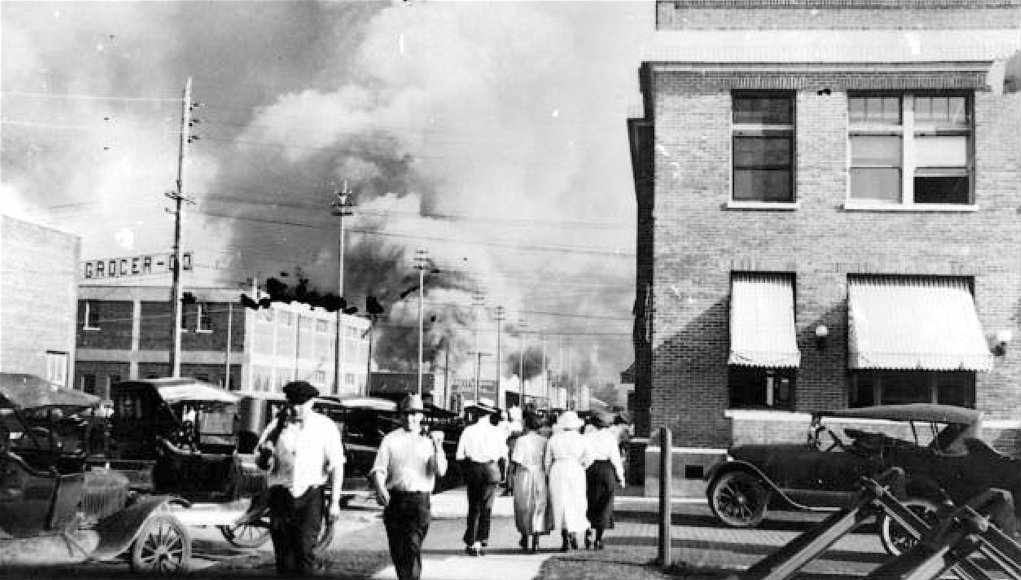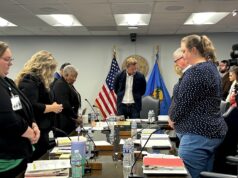End of May, first of June 1921. In Tulsa, a young black male enters a crowded elevator and brushes against a young, white female. She becomes hysterical and says she was sexually assaulted — if not outright raped — in a crowded elevator full of witnesses who later said, yeah, well maybe he did brush against her, but that was the extent of it.
Meanwhile, the young black man is arrested and taken to jail. Afternoon newspapers stir the pot, and there is considerable talk of having a lynching. Frontier justice, a couple of decades after the frontier had become the stuff of silent movies.
Blacks read newspapers, too. An armed group of them goes to the jail and surrounds it, not to fetch the young man out, but to keep him in and safe from somebody’s rope. Then an armed group of whites arrives, and words are exchanged. Soon enough, a shot is fired. Nobody knows by whom.
And so began the Tulsa Race Riot. Fires were started. White snipers on rooftops kept firemen from entering the black section of town. Tulsans were maiming and killing one another. The National Guard arrived. Blacks were rounded up and herded into the centerfields of the city’s baseball parks. Whites set up a machine gun on second base and informed the detainees that moving to left field or right field would bring dire consequences.
Any building, even a church, that could shelter people trying to escape the rioting was set afire by, some have suggested, homemade bombs dropped from private airplanes. Tulsans were bombing Tulsans.

Many unknowns remain
How many died? Nobody knows. Read Tulsa Race Riot: A Report by the Oklahoma Commission to Study the Tulsa Race Riot of 1921, issued 80 years after the fact, and learn that nobody ever will know. Some Tulsans died later of wounds received during the riot, but that information would have mightily embarrassed some families, so their personal physicians would list something respectable, e.g. flu, as “cause of death.” The simple fact is, nobody cares, which means nobody will ever know. The aforementioned report is merely a document outlining what the state would do, if it decided to do anything, which it did not.
Black people, of course, would appreciate a thorough investigation, inasmuch as they were blamed for the riot. But then the notion of “reparations” arises, and state officials stick their heads in the sand yet again.

White hysteria persists
The riot does come in handy once in a while. Tulsa’s minions of the law seem a tad trigger-happy of late, and some fear that protests might become violent, as in Missouri, North Carolina, Maryland and so forth. Thus, internet loonies take to the ether to warn the black community to remain calm … or else.
Or else what? Center field again? These digital crackpots seem to be saying, “You be good now, no matter how many of you get shot when you shouldn’t. If you aren’t good, we can always do you like we did before.”
Before when? Three guesses.
The Tulsa Race Riot was the result of white hysteria over a non-event. Terence Crutcher stopping on the road was a non-event shoved to Page 1 by more white hysteria. Crutcher looked like “a bad dude,” attitude determined from altitude by a chopper cop. And, according to the assistant district attorney, officer Shelby became “emotionally involved” and shot the man.
Hysteria: Now it’s on the internet in anticipation of black “misbehavior” and another riot.























